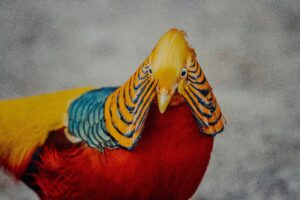
Poetry Writing:
Poetry Writing is an art form that has been around for centuries. It is a way to express emotions, thoughts, and feelings in a creative and meaningful way. Crafting beautiful verses can be a challenge, but with practice and dedication, anyone can become a master of the craft. In this article, we will explore the basics of Poetry Writing, from the different types of poetry to tips and tricks for crafting beautiful verses. We will also provide links to helpful resources, such as searchsynonym.com/blog and careerclimbhq.com, to help you get started.
What is Poetry Writing?
Poetry Writing is the art of creating verses that express emotions, thoughts, and feelings. It is a form of creative writing that uses language to evoke a response from the reader. Poetry can be written in any form, from traditional rhyming verse to free verse. It can be used to tell stories, express feelings, or simply to create a beautiful piece of art.
Types of Poetry
There are many different types of poetry, each with its own unique style and structure. Some of the most popular types of poetry include:
• Rhyming Verse: This type of poetry uses rhyme and meter to create a structured poem.
• Free Verse: This type of poetry does not use rhyme or meter, but instead relies on the poet’s creativity to create a unique piece of art.
• Haiku: This type of poetry is composed of three lines, with the first and last lines having five syllables and the middle line having seven syllables.
• Sonnet: This type of poetry is composed of fourteen lines, usually in iambic pentameter.
• Limerick: This type of poetry is composed of five lines, with the first, second, and fifth lines having seven to ten syllables and the third and fourth lines having five to seven syllables.
Tips for Poetry writing
• Read poetry: Reading poetry is a great way to get inspired and learn about different styles and techniques.
• Brainstorm: Take some time to brainstorm ideas and write down any words or phrases that come to mind.
• Experiment: Don’t be afraid to experiment with different styles and techniques.
• Revise: Take the time to revise and edit your work until it is perfect.
• Share: Share your work with others and get feedback.
• Enjoy: Most importantly, enjoy the process and have fun!
What Is Poetry?
Poetry is a form of artistic expression that uses language to evoke emotions, convey ideas, and create aesthetic experiences. It often employs rhythm, rhyme, and figurative language to create a unique and concentrated form of communication.
What Are the Different Types of Poetry?
Poetry comes in various forms, including sonnets, haikus, ballads, free verse, and epics. Each type has its own structure and style, allowing poets to experiment with different techniques and convey their messages effectively.
How Do Poets Choose Themes for Their Poems?
Poets draw inspiration from various sources, including personal experiences, nature, history, social issues, and emotions. They select themes that resonate with them and explore these topics through their poetry.
What Are Literary Devices in Poetry?
Literary devices are tools and techniques that poets use to enhance their writing. Common examples include metaphors, similes, alliteration, and symbolism. These devices add depth and meaning to poems.
What Is Meter in Poetry?
Meter refers to the rhythmic pattern of stressed and unstressed syllables in a line of poetry. Different meters, such as iambic pentameter or trochaic tetrameter, create distinct rhythms and contribute to a poem’s overall sound and tone.
What Is Rhyme in Poetry?
Rhyme occurs when words share similar sounds, typically at the end of lines. Rhyming schemes, like AABB or ABAB, create patterns that enhance the musicality of poetry. Rhymes can be perfect or slant (near) rhymes.
How Do Poets Use Imagery?
Imagery involves creating vivid mental pictures using descriptive language. Poets use imagery to appeal to the reader’s senses and immerse them in the poem’s world. It helps convey emotions and themes more effectively.
What Is the Role of Symbolism in Poetry?
Symbolism involves using objects, characters, or actions to represent abstract ideas or concepts. Poets often employ symbolism to add depth and layers of meaning to their poems, allowing readers to interpret them on multiple levels.
What Is the Difference Between Traditional and Contemporary Poetry?
Traditional poetry adheres to established forms and structures, while contemporary poetry is more experimental and often challenges conventions. Contemporary poets may use free verse and tackle modern themes and issues.
Read more about Poetry Writing
Looking for the place where this picture was taken? Any Feedback or Question?
Comment on our instagram and we will reply.
Tell us what you want to see next.




